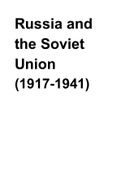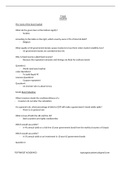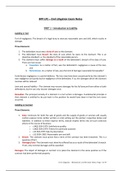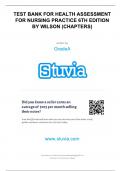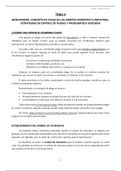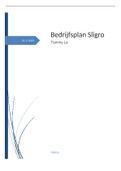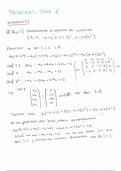Russia and
the Soviet
Union
(1917-1941)
,The Revolutions of 1917
The Impact of WW1
● Germany declared war against Russia in August 1914 as they protected Serbia and they
mobilised their military forces to help it out after Austria-Hungary declared war on them
due to the assassination of Archduke Ferdinand.
● After multiple military defeats, by 1916, there were several discontents with the Tsar and
his Government
● August 1914:
○ Early: Russian army advanced into the Austria and two more advanced into
German province in East Prussia.
○ 26-29: German army killed 70,000 and wounded 50,000 Russians in Tannenberg.
● September 1914: 5-9: Germans went North and defeated the 2nd Russian army in the
Battle of Masurian Lakes killing; 100,000 Russians wounded or killed.
● May 1915:
○ Join Austria- German offensive forced Russians to retreat from Germany and go
back into Russia over 480 km.
○ Only the extreme Russian winter stopped the enemy from advancing any further.
● June 1916:
○ Russian counter attack regained much of the land lost in Austria in 1915.
○ Arrival of German reinforcements saved Austria and stopped the Russian
advance, sending them into retreat. 1 million dead.
Reasons for Russian Defeat 1914-16
● Poor communication:
○ Sent wireless messages to each other and these were intercepted by the
Germans
○ Outdated telegraph system: the military orders gots lost.
● Outdated tactics: Believed the cavalry would be decisive and rode with sabres and
lances against German machine guns.
● Lack of infrastructure/ supplies and equipment:
○ Poor roads and inadequate railway system meant that supplies couldn’t reach the
frontlines.
○ Not enough steelworks, explosives, factories, shipyards and metal suppliers.
○ Soldiers had no boots or winter coats and sometimes two or three men would
share the same rifle; usually they were short of bullets and they need more
medical supplies.
● Leadership of the Tsar (from September 1915):
○ Blamed for military defeats; the peasants, who provided most of the army
recruits, stopped viewing the Tsar as wise and powerful and discontentment
grew.
○ Not capable of making military decisions due to lack of experience.
, ○ The Officers appointed under his command were lazy and overconfident,
throughout 1914, they moved armies too quickly into Eastern Prussia and
outpaced their support and supplies, resulting in defeat.
○ Poor leadership of generals and officers in the army.
Effects of the War
● Devastating effect on the Russian economy; inflation increased and there were several
price raises between 1913-17
● 14 million called to serve between 1914-17 and so higher food prices were made
because there were fewer men left to work the land
● Lack of fuel and essential supplies
● Factories closed due to the shortages of iron, coal and steel and left workers
unemployed
● Wages hardly went up and this resulted in greater poverty
Situation in 1917
Political:
● Tsar worked with the Dumas and this weakened him
● Duma supported the war at first, then later turned against the Tsar with criticism
● Duma became the centre of the opposition for the Tsarist Government due to his lack of
support in them and sharing the power and also his incompetence in the war
● Tsar Government shared no power with the Duma
● Social:
○ 120 million people in Russia, 1% aristocracy, 85% peasants
○ Russification = being forced to become Russian by wearing their clothes,
speaking their language and sharing their religion. (caused a lot of resentment in
immigrants)
○ Okhrana = secret police control that killed people without trial
○ Conscription of 15 million peasant men and horses to fight which meant food
produce decreased
○ Less food lead to hunger and suffering
○ 6 million refugees fled the German occupation in the west
○ National tension increased
○ The employment of a large army was expensive, so economy crashed further
● Rasputin:
○ Alexandria, the Tsarina, refused advice from any of the Duma but instead
consulted in the holy man, Rasputin.
○ Replaced the ministers with Rasputin’s friends, who were useless
○ So many changes in ministers that there was no one organising the distribution of
enough foods, fuels, and other supplies for cities, which lead to further chaos and
discontentment.
● Tsar:
○ Autocrat government lead to dislike of the Tsar (one-man government)
, ○ Support for him decreased among the middle and upper classes due to his
failures in the war
The February Revolution
Triggers for revolt
● Food shortages in Petrograd and Moscow increased social tensions; strikes in bakeries
added to the food shortage crisis.
● Announcement of bread rationing
● International Women’s Day march
● Unusually mild winter
● Support demonstration for the Duma
● Mutiny in the army
● Contempt for the Tsarina
○ She was unpopular with the people and with the Duma. She relied on the
dubious advice of Rasputin rather than of the Duma, which they didn’t like.
● Tsar’s absence:
○ On 22nd of February, Tsar Nicholas left Petrograd for army headquarters 780 km
away and was unaware of the growing crisis.
○ On 25th of February, Nicholas sent an order to the police and the army in
Petrograd to end the unrest immediately.
Timeline
● 14th February: Demonstrations in the support of the Duma.
● 18th February: Strike at the Putilov Steelworks
● 23rd February: On International Women’s Day, women joined striking workers in an
anti-government demonstration; crowds grew even larger when the government
announced that bread rationing might have to begin.
● 23-25th February: 250,000 people demonstrated in Petrograd and crowds became too
big for the police to control and the warm weather encouraged people to join the street
protests.
● 26th February: Soldiers were ordered to fire on the demonstrations and 40 people were
killed. In the evening, some soldiers were unhappy about what their officers were asking
them to do and a small mutiny was suppressed.
● 27th February: Some regiments refused to obey orders to shoot
● 28th February: A military report to the Tsar declared that Petrograd was out of control.
Soviet Order Number One
● In all its political actions, troop units are subordinate to the Soviet.
● All types of arms must be kept under the control of the battalion committees and
company and in no case turned over to the officers, even at their demand.
● The orders of the state Duma shall be executed only in such cases that do not conflict
with the orders of the Soviet of Workers and Soldiers deputies.

